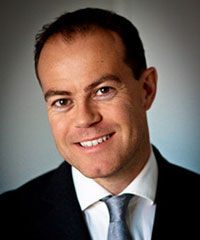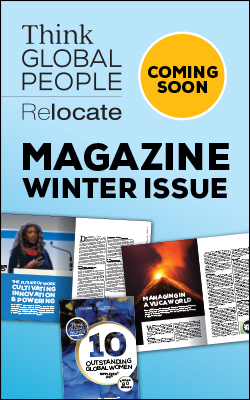‘Less noise, more action’ on inclusion, says Stephen Frost
A new study of award-winning employers’ gender pay gaps by Stephen Frost, a world-leading expert on diversity and inclusion (D&I), finds most perform worse than the national average.

Diversity and inclusion 101
April’s gender pay gap reporting deadline has reignited the debate and awareness about female progression and inclusion in the workplace. For around a third of companies, it is also refocusing minds on action to bridge the gap. In this next phase of the national conversation about female progression and gender pay, what does it mean that those heralded as the most inclusive employers are among the worst performers on balanced gender pay?“The way I understand this is that companies try to approach D&I in one of three ways,” says Stephen Frost. “The first is what I call diversity 101 and this is because they have to. Their approaches are for compliance, driven by legislation. It’s really about mitigating risk. “The second approach is what I call diversity 2.0. This is about managing reputational risk and marketing. I’d put most of the FTSE100 in this paradigm. Their approach is more about corporate image, recruitment and business to business partnerships, for example.“These two approaches are fine up to a point, but in terms of explaining why the pay gaps still exist in these companies, there’s what I call diversity 3.0. This is not something you do on a Friday afternoon. It is about leadership and decision making, and those ‘moments of truth’ in staff development. “For companies that operate diversity 1.0 or 2.0 and who win awards, I would say they haven’t done the heavy lifting and embedded good practice in their businesses.”Where does diversity and inclusion fit with agile organisations?
With studies showing men continue to predominate in high earning roles, a factor which helps underpin the gender pay gap, it's likely most large employers could agree with this assessment that gender balance at senior levels and throughout the talent pipeline is still a work in progress, no matter how successful the road to more equal representation has been so a far.It’s in this context of change and progress that agility will frame Relocate Global’s Festival of Global Mobility Thinking, which takes place on Friday. If organisations are to be responsive to customer and wider societal needs, more and better attention to diversity and inclusion is critical.
Other news and features from Relocate Global:
- Diversity & Inclusion: constructive disruption & more human HR
- CBI calls for renewed focus on inclusive workforces
- How global businesses can harness LGBT talent
Retaining and promoting women
What, then, should leaders be thinking about around agility when it comes to female recruitment, promotion, progression and retention; especially when we acknowledge unconscious bias and the structural factors in play?“If we look at agility and where it crosses over with D&I from the perspective of women and promotion, this should be on every business’s register,” says Stephen Frost. “Addressing the differences between men and women’s motivations, and the speed at which most men make career decisions, mean that agility should be built into those promotion ‘moments of truth’.“Leaders seeking to be agile should therefore be proactively supporting women ahead of the time for promotion. They need to take more personal responsibility for promoting women. The career development process needs to account for the fact men tend to make career decisions faster, are more money-oriented and tend to self-promote more."Being agile around diversity of thought, inclusiveness and female progression also means keeping women engaged by making time for career development conversations. “Leaders and organisations that are agile are looping women into coaching and sponsorship, and preparing for when promotion comes," says Mr Frost. Yet, all too frequently, employers overlook the importance of these moments, which can ultimately see high-performing women leave the organisation, he observes. “On retention, offering stay interviews mean companies are more in tune with their female employees’ aspirations and motivations. Organisations can act before women leave. Companies often spot the red flags and offer more money, but this only only serves to entrench the employee’s decision as too little, too late.”Transparency the key to truly agile, diverse and inclusive organisations
With gender pay reporting and the pay gap firmly back on the agenda, where does Stephen Frost see the diversity and inclusion discussion going next, with race representation on boards now high on policymakers’ radars? Acknowledging the positive voluntary moves toward targets that encourage more diverse racial composition of company boards, Mr Frost says: “When we look at the D&I agenda, it’s actually bigger than gender and race. It’s about transparency for true meritocracy and agility. “Companies that are truly agile are transparent,” continues Mr Frost. “Successful businesses create their efficiencies from adapting to other people. An organisation’s actions, the motives for them and the results should be so transparent they speak for themselves."Yet, one difficulty is that transparency is generally not in the business lexicon. The culture and climate of competitive pressure, internal peer networks and market-sensitive information can all run counter to openness and collaboration. Nevertheless, Mr Frost believes that legislation and statutory publication of data could help companies realise “they don’t have have all the answers internally.”Agility and disruption
Global mobility, and the service providers and professions it encompasses, as well as the wider business world, are all subject to the demographic, digital and legislative changes happening in society. The flurry of mergers, acquisitions and new businesses reflects these challenges and opportunities. The risk of doing nothing is to be left behind.“If you look at companies that are disrupting the status quo, very often these are set up by people who felt the mainstream didn’t deliver for them and they are now challenging more established companies,” says Stephen Frost. “They feel rejected by the prevailing business culture and now they are rejecting it, going off to set companies up for themselves.“Obelisk is one really interesting example. Its CEO, Dana Denis-Smith, set the company up because she was fed up with the lack of agility in law and the company she was working with. Now she recruits people who choose their own hours and offers their services back in to the companies she used to work for. “If you look at companies that failed, like Lehman Brothers, Kodak, Swissair, thinking they had all the answers internally was their downfall.”For related news and features, visit our Leadership and Management section. Find out more about our upcoming Relocate Awards. Relocate’s new Global Mobility Toolkit provides free information, practical advice and support for HR, global mobility managers and global teams operating overseas. Access hundreds of global services and suppliers in our Online Directory
Access hundreds of global services and suppliers in our Online Directory©2025 Re:locate magazine, published by Profile Locations, Spray Hill, Hastings Road, Lamberhurst, Kent TN3 8JB. All rights reserved. This publication (or any part thereof) may not be reproduced in any form without the prior written permission of Profile Locations. Profile Locations accepts no liability for the accuracy of the contents or any opinions expressed herein.

































